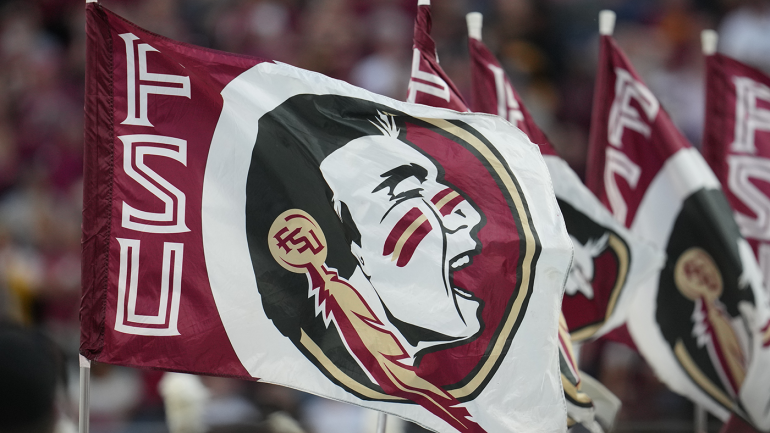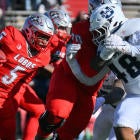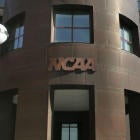
Michael Alford had just gotten off a call with ACC commissioner Jim Phillips. The obvious and immediate question this week was whether the Florida State athletic director had been taken to task. Alford had done all but pound his fist on the table recently demanding more media rights revenue for his school. That or ... what, exactly?
"We have to do something because we're a brand. We're a very important brand, and we drive the media value in this conference," Alford told the FSU board of trustees in a Friday meeting streamed on YouTube.
So, the call was not about that -- last Friday's airing of the grievances by Alford in front of his board. But it soon may be. Friday's presentation was part performance art, part threat to leave the conference.
Boosters, fans, commissioners and the public needed to know from the Florida State perspective that it drives the ACC revenue bus. It isn't the only athletic department that will sit $30 million in revenue behind the SEC and the Big Ten (beginning in 2024), but as of now, it certainly is the loudest.
By the end of Friday's session, the world was aware Florida State feels both underpaid and overwrought. Seldom in the history of these sorts of things do ADs tell employers how bad things are getting. The fact that FSU signed a binding contract that guaranteed it both media rights income and a network until 2036 wasn't good enough.
Back to that call with the commissioner.
"We've known each other 20-something years," Alford said of Phillips. "We've been friends a long time. Jim understands the conference is working to find solutions. There's not a better person doing it than Jim. I think he's the best in the business."
It seems as if business is about to be redefined in the ACC. There is that much consternation in the league.
And Florida State isn't alone. FSU, Clemson, Miami and North Carolina are just … different as national brands (for different reasons) with huge followings.
Combine that with the SEC and Big Ten being in the process of running away with most of the money, power, exposure and -- if the narrative follows -- championships.
Now, the really hard part for the ACC: doing something about it.
On the surface, FSU has no leverage. Below the surface, FSU has no leverage. You don't just tear up and redo a 10-figure contract with 13 years remaining until its expiry.
In May 2012, the 14 ACC members signed a 15-year media rights deal in good faith with ESPN. (Notre Dame joined in all sports but football in September 2014.) In 2016, that contract was extended to 2036. Basically, in exchange for the league getting its own network -- another revenue source -- ESPN got term (20 years) and cost certainty. Like the rest of the Power Five conferences, the revenue was split evenly between all ACC teams.
"That's something that needs to be addressed," Alford told CBS Sports. "Not just us and not just a couple of other brands. We think we bring a high value to the schools. We want to work with them."
In essence, Florida State is publicly stating the desperation faced by schools not in the SEC or Big Ten. And FSU (at least thinks) it has options.
"If we're driving the network, we should have more," Alford said. "We drive the appearances and the revenue. Our second biggest alumni base is in South Florida. … Not everyone understands. We're OK because we're $10 [million] to $15 million behind ... $30 million is a different deal."
"We see what's coming over the next [few] years," Alford added. "How do you survive being that far behind? That's really the message. What are we going to do to make this up?"
According to Alford, Florida State's current all-in number is $42 million -- counting NCAA Tournament, College Football Playoff and bowl revenue.
One idea -- actually, the main one – is a redistribution model that would award ACC schools for accomplishments like CFP and tournament appearances, conference titles and national championships.
A big problem with all of it? There is a finite amount of cash in the ACC deal. If FSU or Clemson or Miami get paid more for winning the ACC, by consequence, the likes of Boston College and Wake Forest will get less.
Complicating matters is FSU making that ask in the middle of the contract where expected revenue has already been budgeted at member schools.
"If you want to give somebody [to give you something more], you're taking it from someone else," said Mike Tranghese, Big East commissioner from 1990-2009.
Since Alford's comments last Friday, the reaction inside the ACC -- as well the college sports world at-large -- can be summed up by a comment from one veteran conference administrator: "You don't air your laundry."
Florida State makes $32 million a year in media rights as the now self-described revenue king of the ACC. That means FSU believes it has more juice than even Clemson, which has won two national championships since 2016 and seven out of the last eight ACC titles.
The ACC contract has been called iron clad, unbreakable. It may be patterned after the previous Big 12 contract that incorporated the league in Delaware so legal issues would wind up being decided somewhere other than Texas.
Texas and Oklahoma ultimately got out of the Big 12 grant of rights agreement a year early, but it cost them a combined $100 million. The difference is the ACC's deal has 13 years remaining. There is no out clause that is apparent. Lawyers at ACC schools have been poring over the language unable to find one as of yet.
FSU's general counsel stated that exit fees alone would be $120 million. That's not counting breaking the grant of rights. That anchor means the ACC owns the schools' media rights until 2036. And 13 years is 13 years.
The best way to get out of a grant of rights? There isn't an easy one with that much term left on the deal. It would likely take a protracted legal battle that could cost at least three times the exit fee on its own.
"We have a very good handle on the grant of rights," FSU trustees chair Peter Collins told Warchant.com this week.
We'll see. Sports Business Journal reports the ACC is working with media consultant Octagon on a plan.
Tranghese had a plan -- a good one -- back in the day. He was original Big East commissioner Dave Gavitt's right hand man as the league grew into the nation's No. 1 basketball power and later added football. There were eventually eight schools in football which had drastically different budgets. The Big East eventually reached a consensus that Miami football should get extra revenue. The Hurricanes were a dynasty at the time and took on most of the travel burden given their location in South Florida.
"We weren't naïve; we knew Miami was a target [for other conferences]," Tranghese said.
In basketball, 80% of Big East TV revenue was split evenly. The other 20% went as performance bonuses based on CBS network appearances, ESPN Big Monday appearances, NCAA Tournament qualification and Big East Tournament advancement, according to Tranghese.
"It wasn't an argument. It wasn't contentious. It was that way for a period of years," he said. "I read the comments by the athletic director at Florida State. The problem that they have is the gap is so great, they may cut into [it], but they aren't going to close it."
Those were the days when college sports weren't so cutthroat. Ironically, Miami eventually left for the ACC.
Gonzaga currently gets weighted shares for its basketball program in the West Coast Conference. Boise State did it in the Mountain West. The Pac-12 had uneven distribution favoring USC and UCLA until commissioner Larry Scott arrived in 2009.
None of those conferences tried to reconfigure a multibillion-dollar media deal with 13 years left on it. That was the agreement made by former ACC commissioner John Swafford, who locked in the deal that preserved the ACC structure but is now below market value.
Is there a current path for the ACC to close the significant gap?
The Pac-12 Four Corners schools -- Arizona, Arizona State, Colorado and Utah -- will likely wait until the Pac-12 deal is announced before deciding whether the Big 12 might make a more secure home. Then it would be up to ESPN and Fox deciding whether they want to pay those schools as much as those in the Big 12 beginning in 2024, $31.66 million per year.
Few industry sources with whom CBS Sports have discussed the Pac-12's media rights deal believe the conference can reach an agreement that large.
Meanwhile, SMU basically is willing to pay its way into the Pac-12. That includes covering "some of the costs" of joining the league, according to the Fort Worth Star-Telegram.
And that's just to get into the Pac-12 ... or what's left of it.
There has been speculation Oregon benefactor Phil Knight would subsidize the school's move to the Big Ten. It was reportedly last fall that Oregon and Washington had discussions with the Big Ten. The Ducks and Huskies -- the two best names left on the realignment board at the moment -- would probably make that leap if the Pac-12 deal falls short or the Four Corners schools jump to the Big 12.
"Thirty [million] is a big number," Alford reiterated. "We're able to compete now and -- what are we? -- $10 million or $12 million behind. We're not going to make up $30 million."
Is there an acceptable number to be behind the SEC and Big Ten?
"Not yet, but what can we be? That's my point. And what are we doing as a league? I know Jim is working his tail off," he said.
Plenty of phone calls remain with the commissioner.





















